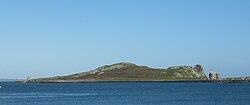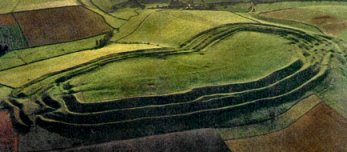With all the talk about Burgh island and similarly named places I was interested when I came across Burrow beach in the Irish Republic.
Very close to this beach is an island 'Ireland's Eye'. Apparently it was originally called 'Eria's island' but then renamed by the Norse when they invaded and 'Eria' became confused with 'Erin'.
It's a familiar looking island complete with monks, cormorants and sea stacks.
In the video the man giving the talk mentions that his house overlooks the bay and if anybody would want to put a finishing touch to it they would place an island in the same spot. He supports this with a description of the outline of the island and how it climbs up gradually from a low point at one end to the other.
http://doneganlandscaping.com/blog/2010 ... lands-eye/

Click the above logo to return to the main site




